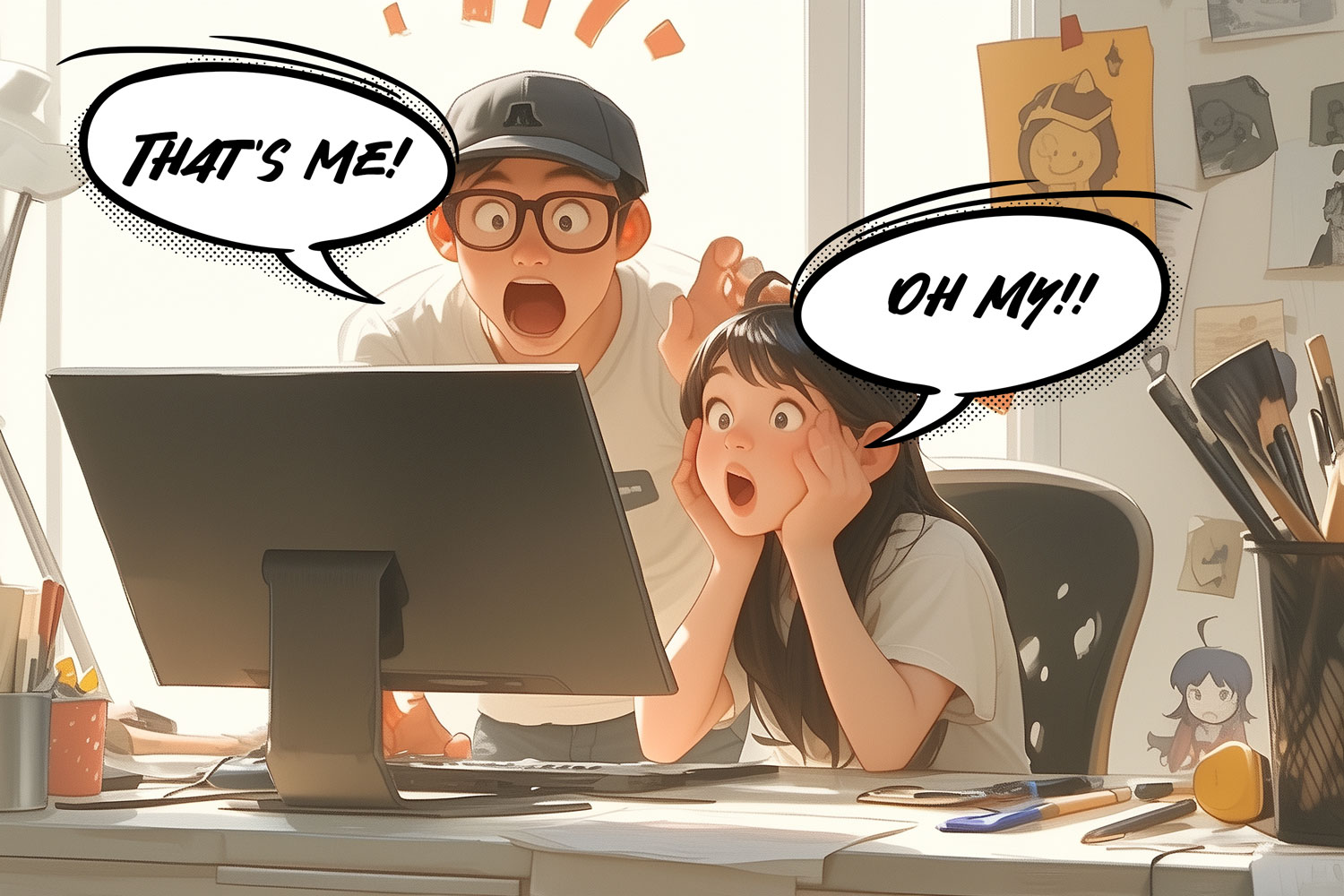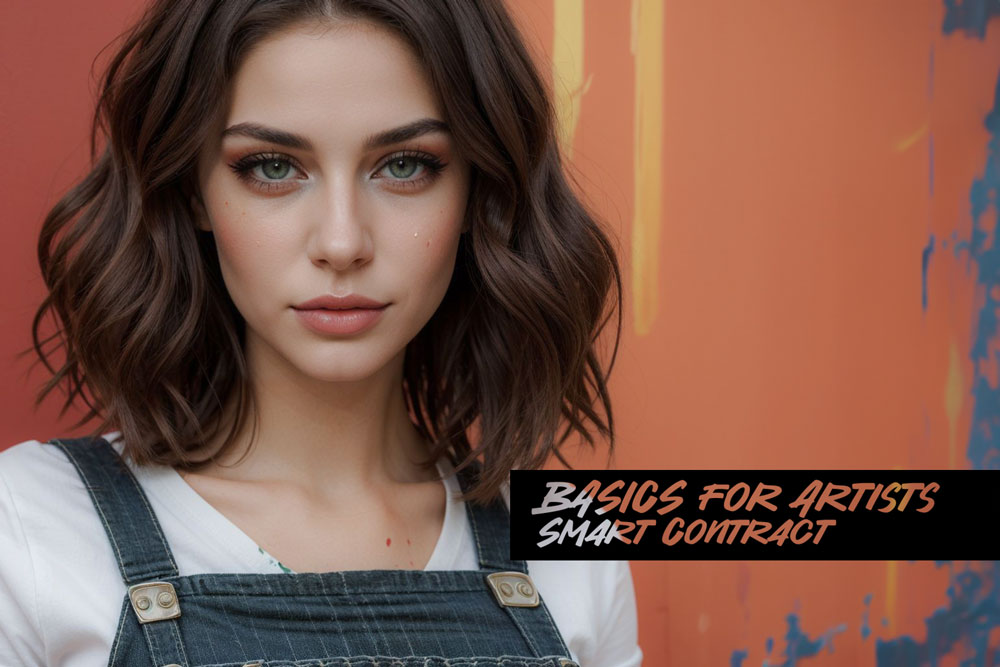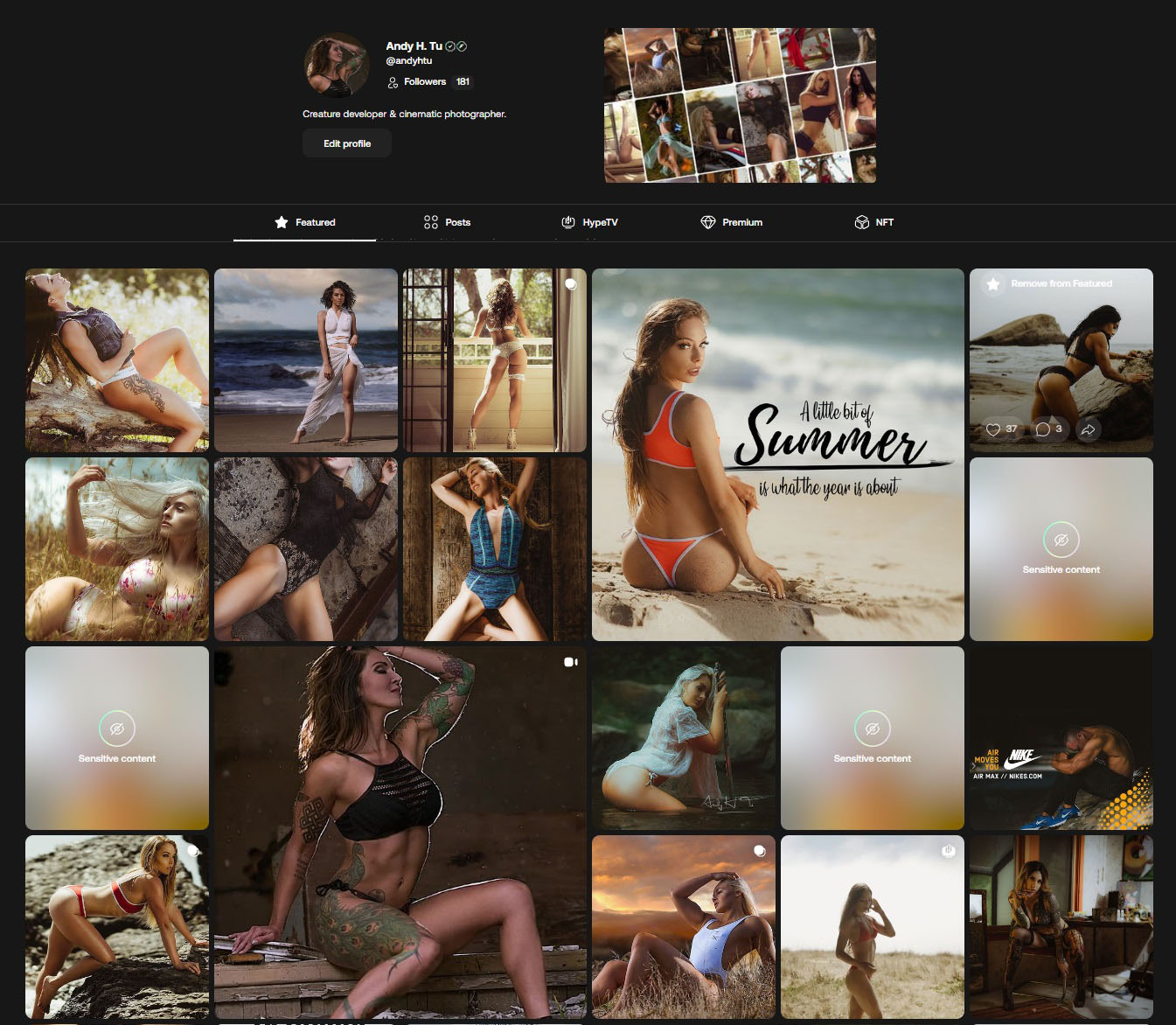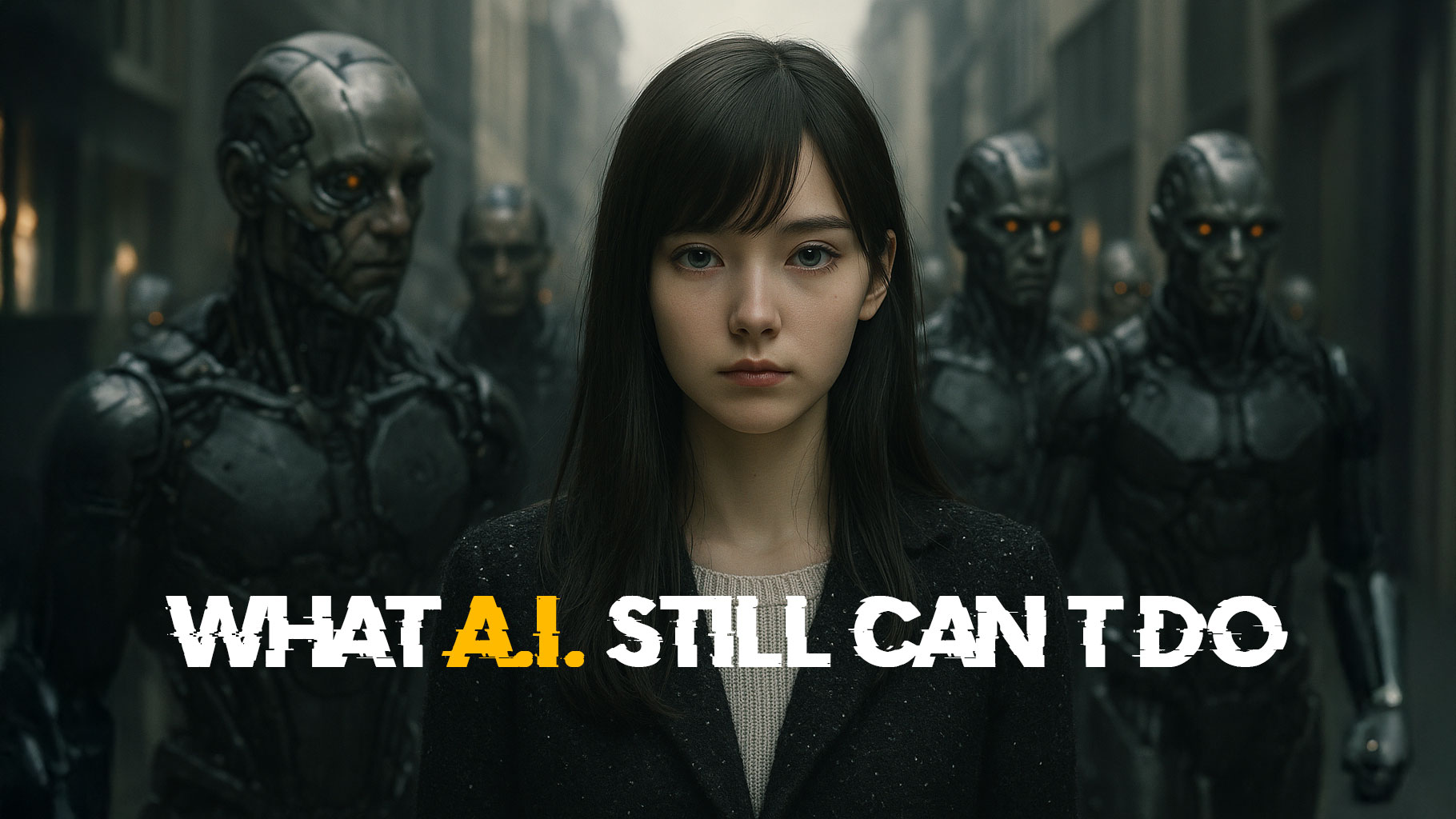
From Stolen Art to Royalties: How Tokenizing AI Data Can Protect Artists’ Rights
Introduction: The Problem of Art Theft and How it Affects Artists
The problem of art theft has always been a major concern for artists, but with the rise of digital art and the advancements in AI technology, it has become even more complicated. Many AI art platforms like Stable Diffusion, Dall-E, and Midjourney are using artists’ data to build their AI models, which is leading to ongoing debates about whether this constitutes as stolen art. On one hand, the use of artists’ data can improve the quality of AI art, but on the other hand, it raises questions about who owns the rights to the art and how artists should be compensated for their work.
One potential solution to this problem is the concept of tokenizing AI data. By tokenizing AI data, artists can give permission for their work to be used as data, and earn royalties for its usage. This not only protects artists’ rights but also provides them with a new revenue stream. This blog post will explore the benefits of tokenizing AI data for artists and how it can be integrated into a decentralized social platform to incentivize artists and content creators.
We will also discuss different approaches for how a platform can pay artists for the usage of their data, such as setting a fee for usage, a percentage of revenue generated, or using smart contracts to automatically distribute royalties based on certain parameters. Furthermore, we will examine the impact of tokenizing AI data on the art industry and the ongoing debate about the ownership of AI art.

Is Stable Diffusion Ethical? Here’s the truth of it—labeling Stable Diffusion as entirely ethical or unethical is a tough call. While it opens up new avenues of creative exploration, its methods of using existing art pieces as learning material can be seen as a violation of the original artists’ rights. It’s like a double-edged sword, cutting both ways.
Table of Contents
The Basics of Tokenizing AI Data
Tokenization is the process of converting an asset, such as digital art, into a digital token that can be tracked and traded on a blockchain. This allows for the creation of a digital asset that can be owned, traded, and tracked, just like physical assets. In the context of AI art, tokenizing data refers to the process of converting the data used to train AI models into a digital token that can be bought, sold, and tracked on a blockchain.
Tokenizing AI data has several benefits for artists. Firstly, it allows them to prove ownership and control of their work. By tokenizing their data, artists can demonstrate that they are the creators of the data and that they have the rights to it. This can help to prevent art theft, as it becomes much easier to prove ownership and take legal action against those who use the data without permission.
Secondly, tokenizing AI data allows artists to earn royalties for its use. By tokenizing their data, artists can set a fee for its usage, or a percentage of the revenue generated from its use, as a form of payment for their work. This allows artists to be compensated for the use of their data, which is particularly important in the context of AI art, where the data is used to train models that generate new artwork.
Additionally, tokenizing AI data can also help to improve the quality of AI art. As more data is tokenized and made available, AI models can be trained on a larger and more diverse dataset, which can lead to more sophisticated and realistic artwork. As a result, tokenizing AI data not only protects the rights of the artist, but also improves the AI art industry as a whole.

Smart Contracts in Tokenizing AI Data
Smart contracts are self-executing contracts with the terms of the agreement between buyer and seller written directly into lines of code. They can be programmed to automatically execute certain actions, such as the transfer of funds, when certain conditions are met. This makes them a powerful tool for automating the process of paying royalties to artists when their data is used.
Mechanisms for Royalty Payments Through Smart Contracts
One approach for using smart contracts to pay royalties is to set a fee for usage of the data. The smart contract can be programmed to automatically deduct the fee from the user’s account and transfer it to the artist’s account when the data is used. This can be done on a per-use basis, or for a certain period of time.
Another approach is to set a percentage of the revenue generated from the use of the data as payment for the artist. The smart contract can be linked to a payment gateway that automatically deducts the percentage from the revenue generated by the use of the data and then distributes it to the artist.

Additionally, smart contracts can also be programmed to automatically distribute royalties based on certain parameters such as usage, or revenue generated. For example, an artist could set a royalty rate for each time the art is sold and the smart contract will automatically execute the royalty transfer to the artist.
In any case, the calculation method should be agreed upon by both the artist and the user of the data, and should be clearly outlined in the terms of the smart contract. This ensures that there is a clear and transparent agreement in place for the usage of the data, and that the artist is fairly compensated for their work.
Benefits and Flexibility of Using Smart Contracts
Using smart contracts for tokenizing AI data also allows for a more efficient and secure way of tracking and managing the usage of the data. The blockchain’s immutability and transparency features ensure that all transactions are recorded and can be easily tracked, making it difficult for anyone to use the data without permission or without paying the appropriate royalties.
Overall, smart contracts play a vital role in automating the process of paying royalties to artists when their data is used. They provide a transparent and secure way of managing the usage of the data and ensure that artists are fairly compensated for their work. With different approaches available for calculating royalties, smart contracts can be tailored to the needs of the artist and the user, making it a flexible solution for tokenizing AI data.

Discover the power of smart contracts for artists. Automate royalty payments, reduce fees, protect your rights, and more. Learn the basics now!
Introduction to Decentralized Social Platforms for Tokenization
Decentralized social platforms are built on blockchain technology and allow for greater control, transparency, and security for its users. This makes it an ideal platform for integrating tokenizing AI data, as it provides a secure and transparent way for artists to tokenize their data and earn royalties for its use.
Mechanics of Royalty Payments and Incentivization on Decentralized Platforms
A decentralized social platform can be used to incentivize artists and content creators by allowing them to tokenize their data and earn royalties. This can be done by integrating smart contracts into the platform that automatically pay royalties to the creators when their data is used. This can be done on a per-use basis, or for a certain period of time, or a percentage of revenue generated.

By allowing artists and content creators to tokenize their data and earn royalties, the platform can attract more creators to the platform, which in turn can provide more content for the users. This can create a virtuous cycle where more creators join the platform, creating more content, attracting more users and creating more demand for the artist’s data.
Benefits for the Ecosystem: Creators, Platform, and Users
Additionally, the integration of tokenizing AI data into a decentralized social platform can also benefit the blockchain, as it can increase the usage of the blockchain and create more demand for the token. It also benefits the creators as they can monetize their data and earn royalties, and the users as they have access to a wider variety of content.
Integrating tokenizing AI data into a decentralized social platform can provide a mutually beneficial solution for artists, the platform, the blockchain, and the users. It allows artists to tokenize their data, earn royalties and protect their rights, while providing the users with a wider variety of content and incentivizing the platform and blockchain.
Changing Valuation and Compensation in the Art Industry
Tokenizing AI data has the potential to greatly impact the art industry in several ways. Firstly, it can change the way art is valued. By tokenizing data, artists can prove ownership and control of their work, making it easier to track and value the data. This can lead to a more transparent and fair market for AI art, where the value of the art is determined by the quality of the data and the usage of the data.
Secondly, tokenizing AI data can change the way artists are compensated for their work. By allowing artists to earn royalties for the usage of their data, they are no longer dependent on sales of physical artwork or licensing agreements to earn a living. This can lead to a more sustainable income for artists, and can also provide a new revenue stream for artists who may not have had success in traditional art markets.
Enhancements to AI Art Platforms Through Tokenization
Furthermore, tokenizing AI data can also have a positive impact on AI art platforms. As more data is tokenized, AI art platforms can access a larger and more diverse dataset to train their models, which can lead to more sophisticated and realistic artwork. This can improve the overall quality of AI art and attract more users to the platform, which can benefit both the platform and the artists.
Debate Over Ownership and Future Directions
However, tokenizing AI data also raises new questions about the ownership of AI art. Some argue that the artist who created the data should be considered the creator of the AI-generated art, while others argue that the creators of the AI model should be considered the creators of the art. This ongoing debate is likely to continue as the technology and the industry continue to evolve.
In any case, tokenizing AI data can change the way art is valued and the way artists are compensated for their work. It can create new revenue streams for artists, improve the quality of AI art and create a more fair and transparent market for AI art. However, it also raises new questions about the ownership of AI art that need to be addressed.
Advancements in AI Art Through Tokenization
The future of AI art is closely tied to the development of tokenization technology. As more and more artists begin to tokenize their data, more data will become available for use in AI art. This can lead to the development of more sophisticated and realistic AI models. With a larger and more diverse dataset, AI models can be trained to generate more nuanced and detailed artwork. This can lead to the creation of new and exciting forms of digital art that were previously not possible.
Creating a Fair and Transparent Market for AI Art
In addition, tokenization can also help to create a more fair and transparent market for AI art. By tokenizing their data, artists can prove ownership and set a price for its usage, which can help to ensure that they are fairly compensated for their work. This can also help to create a more sustainable income for artists, as they will be able to earn royalties for the usage of their data.
Furthermore, tokenization can also play a key role in the development of a decentralized social platform where artists and content creators can share and sell their data, which can lead to a virtuous cycle where more creators join the platform, creating more content, attracting more users and creating more demand for the artist’s data.
Overall, tokenization has the potential to greatly improve the quality of AI art, create a more fair and transparent market for AI art, and provide a sustainable income for artists. As the technology and the industry continue to evolve, tokenization can play a key role in shaping the future of AI art.

Imagine having a magic wand that turns thoughts into visuals, ideas into animations, and dreams into designs; that’s the essence of what these Stable Diffusion models do. They’re not just algorithms tucked away in the digital ether but powerful tools reshaping industries from film to fashion, gaming to graphic design. These are just some of…
Tokenization in Content Creation
Tokenization has the potential to revolutionize the way creators are compensated for their work. While the art industry is one of the first to explore the possibilities of tokenization, it is not the only field that could benefit from it. Tokenization can be applied to various forms of content creation such as music, writing, and video content creation.
Advantages and Applications of Tokenization
One of the key advantages of tokenization is that it allows creators to share their content on a decentralized platform and have more control over how their work is used. Creators can share their data and decide if they want to allow or not allow their work to be part of the data base for AI models to learn from. By allowing their data to be used, they can be compensated for their work and the data that is shared. This way, creators can share their data with the community, and the AI models can learn from it, and in return, the creators are compensated when their data is used to generate new content.
For example, in the music industry, tokenization could help artists and songwriters to track their music usage and receive royalties for every play. Musicians could tokenize their music, tracks, or samples and sell them to other creators, and get royalties on each use. This way, the artist will have a new source of income, and the industry will have a more transparent and fair way to track and compensate creators.
Similarly, in writing, tokenization can be used to track the usage of an article, book, or any written content, and pay royalties to the author for every time it is read or used. This can also help to prevent plagiarism and ensure that the creators are getting fair compensation for their work.
In the video content creation, tokenization can be used to track the views of a video and pay royalties to the creators. This can be applied to any kind of video, from educational, entertainment, commercials, and more. By tokenizing the video, the creator has a new way to monetize their work and the audience has a more transparent way to support their creators.
Future Prospects
Incentivizing creators in this way can lead to an increase in the quantity and quality of content, as creators will have a new way to monetize their work. This can lead to a virtuous cycle where more creators join the platform, creating more content, attracting more users, and creating more demand for the creator’s data. Additionally, by allowing creators to share their content data with the AI models, the AI models can continue to improve and generate more realistic and diverse content, leading to a better user experience.
Moreover, by allowing creators to share their data on a decentralized platform, the creators will have more insight on how their data is being used, and why they are getting paid. This increases transparency and fairness, and allows creators to have more control over their content.

Overall, tokenization has the potential to change the way content is created and monetized, and can provide a new revenue stream for creators in different fields. With the potential to be applied to a wide range of content, tokenization can revolutionize the way creators are compensated for their work, and make the industries more transparent and fair. The ability to share data with AI models and be compensated for it, while having insights on how it is being used, is a powerful tool that can lead to a better user experience and a more fair and sustainable industry for creators.

The concept of censorship on social media platforms has always been a controversial issue. While necessary for ensuring a safe and appropriate environment, it can often detract from the overall user experience, leading to frustrating experiences such as scrolling through endless streams of blurred out images. This is why gamifying censorship can change the way…
Legal and Regulatory Challenges
Tokenizing AI data and implementing it in the art industry or other fields is not without its challenges. There are a number of potential roadblocks that need to be overcome in order to make tokenization a reality.
One of the main roadblocks is legal and regulatory issues. There are still a lot of questions around the ownership and rights of AI-generated art and content. Additionally, there may be legal issues around tokenizing and selling data, as well as concerns about privacy and data protection. These legal and regulatory issues will need to be addressed in order for tokenization to be widely adopted.
Infrastructure and Technical Knowledge Limitations
Another potential roadblock is the lack of infrastructure and support for tokenization. Many creators may not have the technical knowledge or resources to tokenize their data and make it available for sale. Additionally, there may be a lack of platforms and marketplaces for creators to sell their data.
Strategies to Overcome Roadblocks
Despite these challenges, there are ways to overcome these roadblocks. One way to address the legal and regulatory issues is to work with legal experts and government bodies to establish clear guidelines and regulations for tokenization. Additionally, efforts can be made to educate creators and provide them with the tools and resources they need to tokenize their data and make it available for sale.
Another way to overcome these roadblocks is to increase the adoption and usage of tokenization by creating a network effect and making it more accessible to creators. This can be done by creating platforms and marketplaces that make it easy for creators to tokenize and sell their data, as well as by promoting tokenization and raising awareness about its benefits.
Overall, while there are potential roadblocks for tokenizing AI data, it is possible to overcome them with the right approach and support. By addressing legal and regulatory issues, providing creators with the tools and resources they need, and increasing the adoption and usage of tokenization, we can pave the way for a more fair and sustainable industry for creators.
Final Thoughts Solving Art Industry Challenges through Tokenization
The art industry is facing a problem with art theft and the ongoing debate about the ownership of AI art. Tokenizing AI data can provide a solution to this problem by allowing artists to prove ownership and control of their work and earn royalties for its use.
Tokenization is the process of converting an asset into a digital token that can be traded on a blockchain. By tokenizing AI data, artists can have a new revenue stream and a new way to monetize their work. This can be done by sharing their data and decide if they want to allow or not allow their work to be part of the data base for AI models to learn from. By allowing their data to be used, they can be compensated for their work and the data that is shared.
Automating Royalties with Smart Contracts
Smart contracts can be used to automate the process of paying royalties to artists. They can be programmed to automatically distribute royalties to the artist based on certain parameters such as usage or revenue generated. This is done by linking the smart contract to a payment gateway that automatically deducts the royalties from the revenue generated by the use of the data, and then distributes it to the artist.
Integrating tokenizing AI data into a decentralized social platform can incentivize artists and content creators by allowing them to tokenize their data and earn royalties.

This can lead to a virtuous cycle where more creators join the platform, creating more content, attracting more users, and creating more demand for the artist’s data.
Benefits of Tokenizing AI Data Across Industries
Tokenizing AI data can change the way art is valued and the way artists are compensated for their work. It can revolutionize the art industry and protect artist’s rights by providing a new revenue stream, a new way to monetize their work, and more control over their content. Additionally, tokenization can be applied to other fields, such as music, writing, and video content creation, providing a new revenue stream for creators in different fields.
Overcoming Roadblocks to Tokenization
However, there are potential roadblocks for tokenizing AI data, such as legal and regulatory issues, and lack of infrastructure and support for tokenization. These roadblocks can be overcome by addressing legal and regulatory issues, providing creators with the tools and resources they need, and increasing the adoption and usage of tokenization.
In conclusion, tokenizing AI data has the potential to revolutionize the art industry and protect artist’s rights. By allowing artists to prove ownership and control of their work, and earn royalties for its use, tokenization can provide a new revenue stream and a new way to monetize their work. Additionally, by integrating tokenizing AI data into a decentralized social platform, we can incentivize artists and content creators and create a more fair and sustainable industry for creators. While there are potential roadblocks, with the right approach and support, we can overcome them and pave the way for a more fair and sustainable industry for creators.
Be a voice that matters –

I invite you to join me and become part of the awesome community working together to create a platform that’s not just fun, but also lucrative. We need your input, your creativity, and your willingness to take a stand against censorship and botting on decentralized social platforms.
So, come on over to our Discord server, and let’s make some magic together!








Leave a Reply